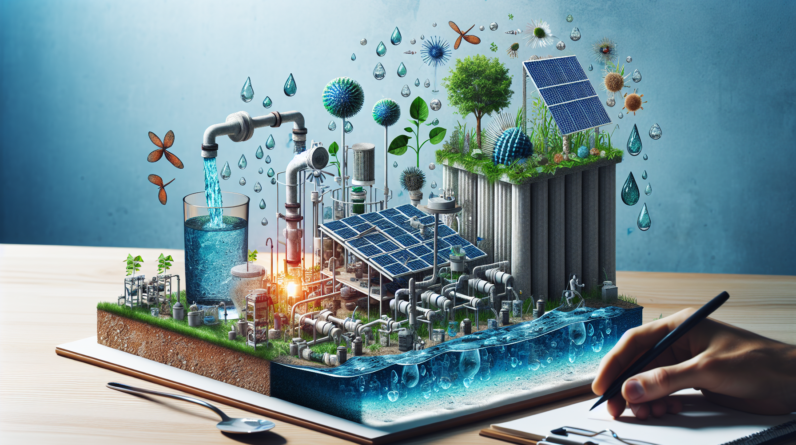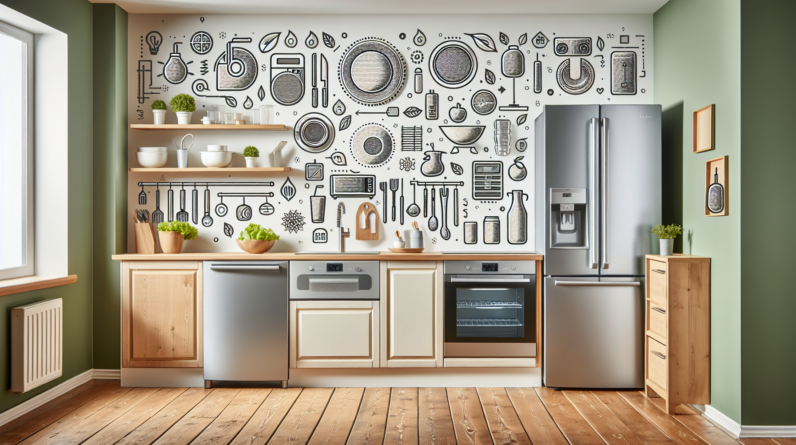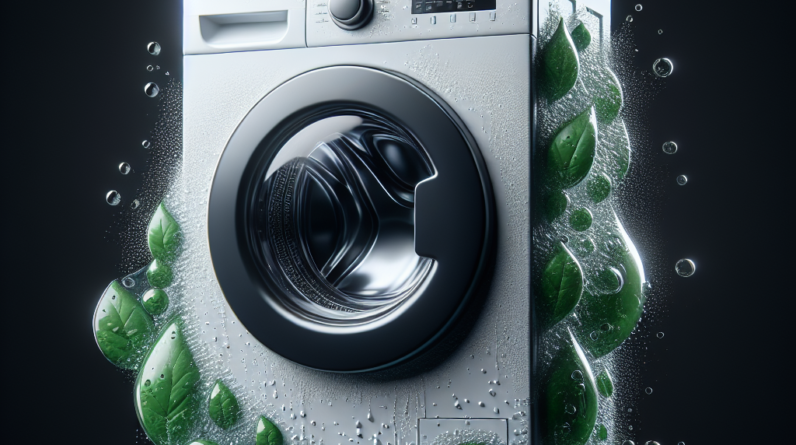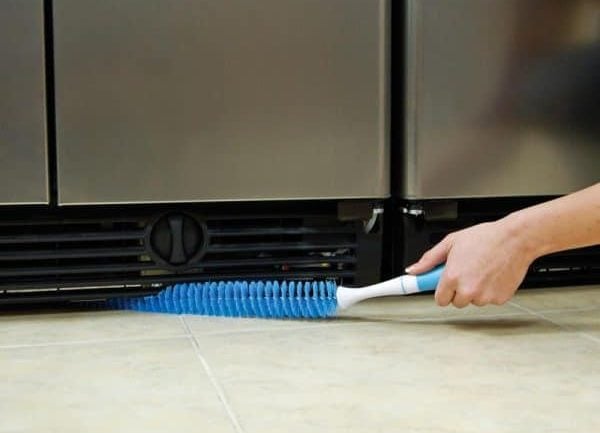
Are you looking for simple ways to reduce your energy consumption in the kitchen? Look no further! In this article, you will discover valuable tips on how to maximize the energy efficiency of your kitchen appliances. By implementing these easy-to-follow suggestions, you can not only reduce your carbon footprint but also save money on your energy bills. From choosing the right cookware to utilizing the appropriate settings on your appliances, we’ve got you covered. Let’s get started and make your kitchen a more energy-efficient space!
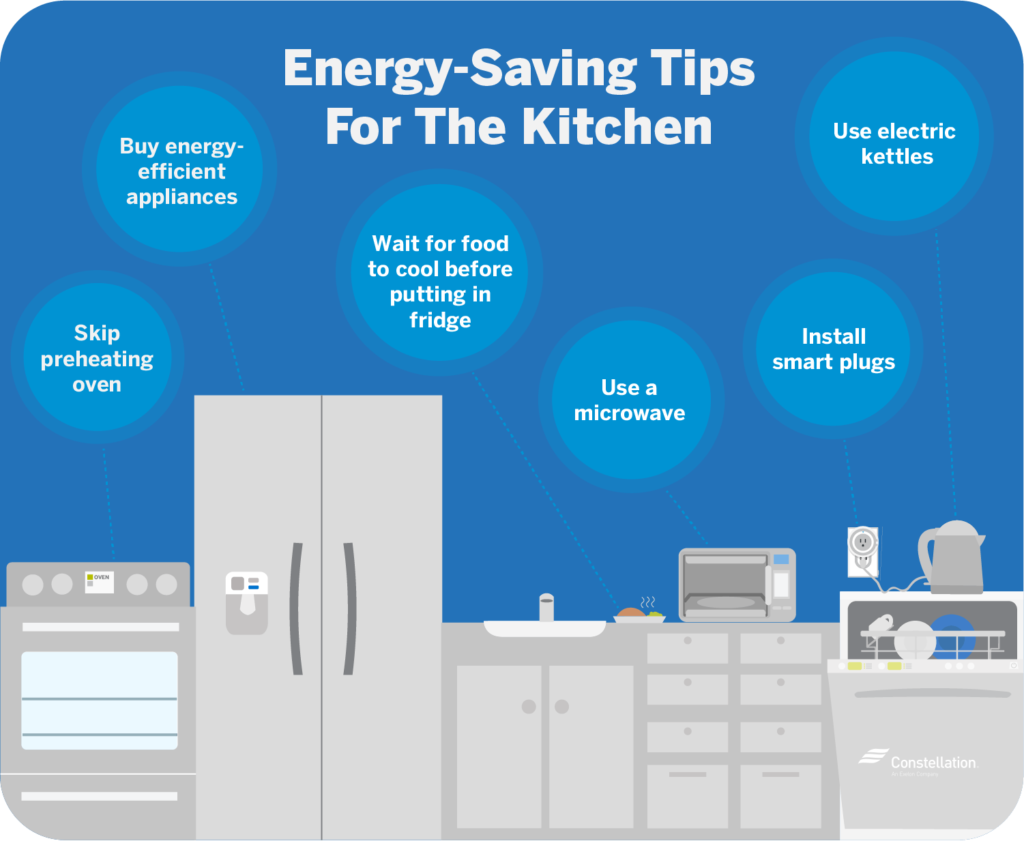
This image is property of blog.constellation.com.
Tips for Energy-Efficient Use of Kitchen Appliances
When it comes to saving energy in the kitchen, your appliances play a significant role. From the refrigerator to the coffee maker, each kitchen appliance can be used in a way that minimizes energy consumption. By following these tips, you can make your kitchen more energy-efficient and reduce your environmental impact while still enjoying delicious meals and beverages.
Refrigerator
Set the right temperature
Set your refrigerator to the ideal temperature range of 35°F to 38°F (1.7°C to 3.3°C) and your freezer to 0°F (-17.7°C). Keeping your refrigerator colder than necessary not only wastes energy but can also affect the quality and freshness of your food.
Keep the door closed
Every time you open your refrigerator door, cold air escapes, and the appliance has to work harder to cool down again. To minimize energy waste, make sure to close the door promptly after retrieving or storing items. Additionally, check the seals on your refrigerator door regularly to ensure they are tight and not allowing cold air to escape.
Clean the coils
Dust and dirt can accumulate on the coils located at the back or underneath your refrigerator, inhibiting airflow and making it less energy-efficient. Regularly clean the coils to remove any debris and improve the appliance’s performance. This simple step can help your refrigerator run more efficiently and save energy.
Don’t overload the fridge
While it’s tempting to fill your refrigerator to the brim, overcrowding can restrict airflow and prevent the appliance from cooling your food properly. Avoid overloading your fridge and allow the cold air to circulate freely, ensuring optimal energy efficiency.
Allow warm food to cool down first
Before placing hot or warm food in the refrigerator, allow it to cool down to room temperature. Doing this avoids unnecessary strain on the appliance’s cooling system and reduces energy consumption.
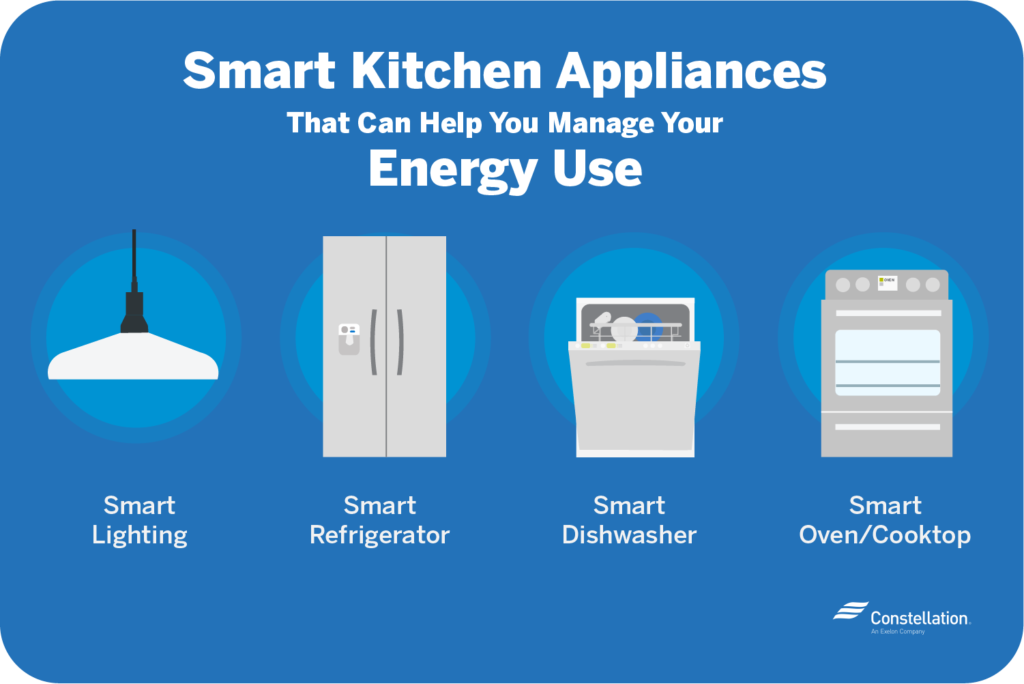
This image is property of blog.constellation.com.
Oven and Stove
Choose the right size burner
When using the stove, remember to match the size of the burner to the size of your cookware. A small pan on a large burner wastes energy as heat is lost to the surrounding air. Conversely, using a large pan on a small burner takes longer to cook and consumes more energy.
Use proper cookware
Using the right type of cookware can make a significant difference in energy efficiency. Opt for flat-bottomed pans that make maximum contact with the burner, allowing for efficient heat transfer. Additionally, using lids on pans helps to retain heat and reduce cooking times.
Preheat efficiently
For many recipes, preheating the oven is necessary, but it’s important not to overdo it. While some dishes require a specific preheating temperature, most can be prepared by preheating the oven for a shorter period of time or even skipping preheating altogether. However, be sure to follow the instructions in your recipe for optimum results.
Turn off the oven early
Many recipes call for the oven to remain on even after the cooking time is complete. However, for dishes that don’t require additional browning or melting, you can turn off the oven a few minutes before the recommended cooking time ends. The residual heat will continue to cook your food, saving energy without compromising taste.
Use residual heat
Take advantage of the residual heat in your oven by turning it off a few minutes before your food is fully cooked. Keep the oven door closed, and the remaining heat will continue to cook your food, reducing energy usage while achieving the desired result.
Microwave
Use microwave-safe dishes
When using the microwave, it’s important to use containers that are specifically labeled as microwave-safe. These dishes are designed to withstand the heat generated by the microwave without releasing harmful chemicals or causing damage.
Cover food to retain moisture
Covering your food with a microwave-safe lid or microwave-safe wrap helps to retain moisture and reduce cooking time. This allows you to cook your food efficiently and enjoy the same delicious results while using less energy.
Avoid using excessive power settings
Using a higher power setting on your microwave may seem like a quick way to cook food faster, but it also consumes more energy. Whenever possible, use the microwave on a lower power setting, as it will still cook your food thoroughly while using less energy.
Use the defrost function
For frozen foods, using the defrost function on your microwave is not only convenient but also more energy-efficient than other methods. This function is specifically designed to defrost foods quickly and evenly, without wasting unnecessary energy.
Keep the microwave clean
Regularly cleaning the interior of your microwave helps it work more efficiently, ensuring optimal energy usage. Food splatters or spills can create hotspots that require the microwave to work harder to heat your food. Keep your microwave clean to maximize its energy efficiency.

This image is property of miramarkitchenandbath.com.
Dishwasher
Only run the dishwasher when it’s full
Waiting until your dishwasher is fully loaded before running a cycle is a simple yet effective way to save energy. Running a full load uses the same amount of water and energy as a partial load, making it more energy-efficient to wait until you have a full load.
Scrape instead of pre-rinsing
Instead of pre-rinsing your dishes before placing them in the dishwasher, scrape off excess food particles. Modern dishwashers are designed to tackle dirtier dishes and can effectively clean them without the need for excessive pre-rinsing. This reduces both water and energy consumption.
Use the energy-saving mode
Many dishwashers have an energy-saving mode or eco cycle that uses less water and lower temperatures to clean your dishes. Take advantage of this feature when appropriate, as it can significantly reduce energy usage without sacrificing cleanliness.
Air-dry dishes instead of using heated dry
Dishwashers often have an option to heat dry your dishes, but this consumes unnecessary energy. Instead, choose the air-dry setting or open the dishwasher door after the wash cycle is complete to allow the dishes to air dry naturally. It may take longer, but it’s a more energy-efficient option.
Maintain and clean the dishwasher
To ensure your dishwasher continues to operate efficiently, it’s important to maintain and clean it regularly. Remove any debris or residue from the filters and spray arms, and periodically run a maintenance cycle with dishwasher cleaner to keep the appliance in top shape.
Coffee Maker
Make only the amount you need
Brewing a whole pot of coffee when you only need a cup or two wastes both energy and coffee. Consider making just the amount you need, whether it’s using a single-serve coffee maker or measuring out the right amount of ground coffee for your desired servings.
Opt for energy-saving features
When looking for a new coffee maker, consider models with energy-saving features such as automatic shutoff or programmable brewing times. These features allow you to customize your coffee maker’s usage and save energy when it’s not in use.
Keep the coffee maker clean
Regularly cleaning your coffee maker not only ensures a better-tasting cup of coffee but also helps maintain its energy efficiency. Mineral deposits or coffee residue can build up over time and affect the appliance’s performance. Follow the manufacturer’s instructions for cleaning and descaling to keep your coffee maker in optimal condition.
Use a thermal carafe
If you enjoy multiple cups of coffee throughout the day, using a thermal carafe helps to keep your coffee hot without using additional energy from the coffee maker’s warming plate. This way, you can enjoy hot coffee for longer periods without sacrificing taste or energy efficiency.
Consider alternative brewing methods
Alternative brewing methods, such as the French press or pour-over coffee, can be more energy-efficient compared to traditional drip coffee makers. These methods often require less energy and produce less waste, making them environmentally friendly options for coffee lovers.
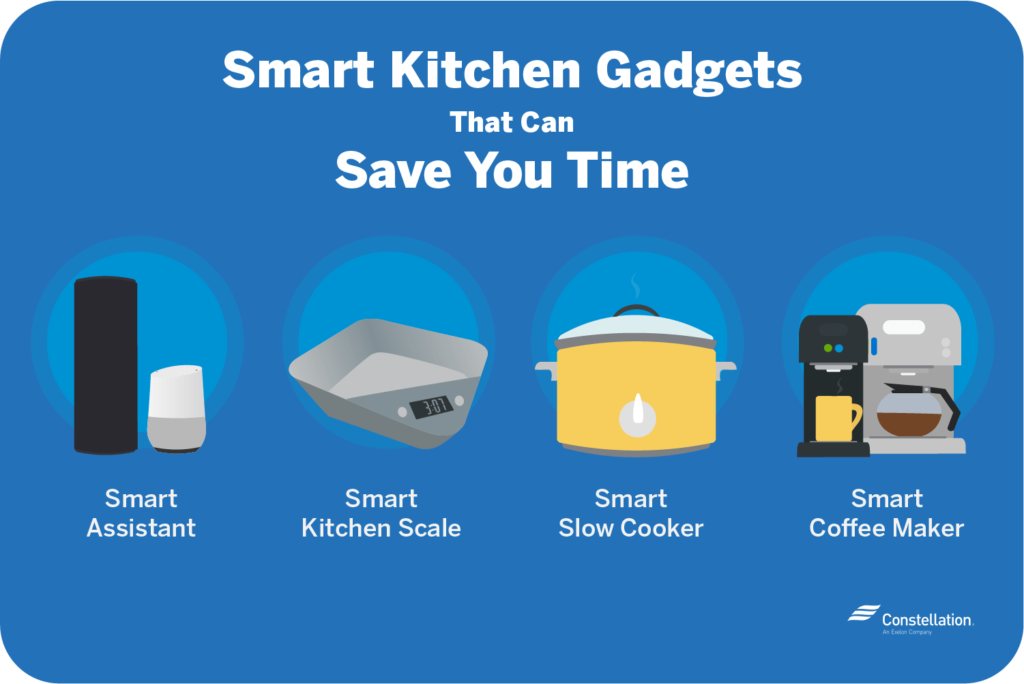
This image is property of blog.constellation.com.
Toaster
Toast multiple slices at once
Rather than toasting individual slices of bread, toast multiple slices at once to reduce energy consumption. Most toasters have multiple slots, allowing you to toast more slices simultaneously and save time and energy in the process.
Don’t set the toaster to the highest setting
Setting your toaster to the highest setting doesn’t necessarily mean you’ll get toast faster. Instead, it uses more energy and can lead to burnt toast. Experiment with different settings and find the one that gives you the desired level of toasting without wasting unnecessary energy.
Clean the toaster regularly
Toasters can accumulate crumbs and debris, affecting their performance and energy efficiency. Regularly clean the crumb tray and inner surfaces of your toaster to remove any buildup. This simple task helps to maintain the toaster’s functionality and save energy.
Use a toaster oven for small meals
Toaster ovens are versatile appliances that can be used for toasting, baking, and reheating. For small meals or tasks that require less energy, opt for a toaster oven instead of the full-size oven. It’s a more energy-efficient option and provides quicker results.
Unplug when not in use
When not in use, unplug your toaster to prevent it from using standby power. Standby power, also known as vampire power, is the energy consumed by electronic devices when they’re plugged in but not actively in use. By unplugging your toaster, you contribute to energy savings and reduce your household’s overall energy consumption.
Blender
Blend in batches
When using a blender, it’s more energy-efficient to blend ingredients in batches rather than all at once. This allows the blender to work more efficiently and requires less energy. Plus, blending in batches can help ensure a smoother consistency for your recipes.
Use the appropriate speed
Most blenders have multiple speed settings. To save energy, start blending at a lower speed and gradually increase it as needed. This approach allows the blender to work more efficiently, reducing overall energy consumption.
Avoid excessive blending time
Blending for longer than necessary consumes unnecessary energy. For most recipes, a brief period of blending is sufficient to achieve the desired consistency. Avoid blending for an extended period and turn off the blender as soon as your ingredients are well blended.
Minimize pre-cutting
While some ingredients may require pre-cutting to fit into the blender, try to minimize the amount of pre-cutting to save time and energy. Cutting ingredients into smaller pieces allows the blender to blend them more quickly and efficiently.
Clean the blender promptly
After using the blender, clean it promptly to remove any residues. Sticky or dried-on food can be more challenging to clean, requiring more energy and water. By cleaning the blender immediately, you can reduce the effort required and maintain its energy efficiency.
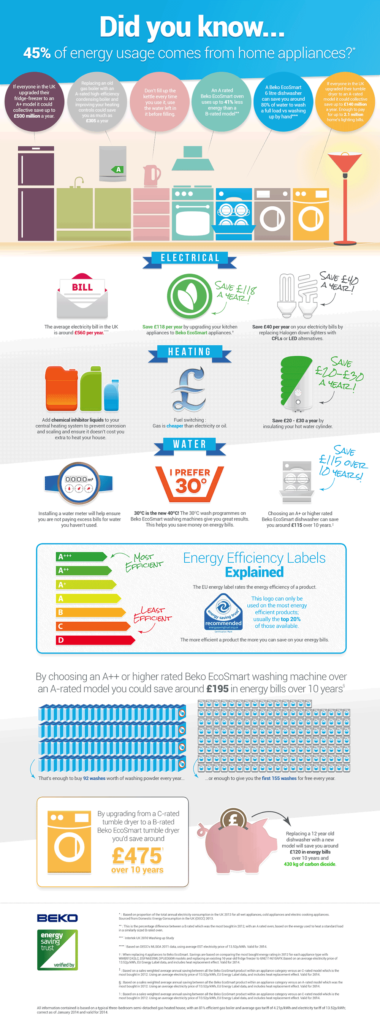
This image is property of downloads.beko.co.uk.
Electric Kettle
Boil only the required amount of water
When boiling water, measure out only the amount you need rather than filling the kettle to its maximum capacity. Boiling excess water consumes more energy, so it’s more eco-friendly and energy-efficient to boil just enough for your specific needs.
Use the kettle’s temperature controls
Many electric kettles come with temperature controls, allowing you to select the desired heat level for different beverages. Utilize this feature to heat water to the optimal temperature, whether it’s boiling water for tea or warming water for instant soup, reducing unnecessary energy consumption.
Keep the kettle clean
A clean kettle operates more efficiently, so it’s important to regularly descale and clean your electric kettle. Mineral deposits can build up over time, affecting the kettle’s performance and energy efficiency. Refer to the manufacturer’s instructions for proper cleaning and maintenance.
Avoid unnecessary reboiling
If you find yourself frequently reheating water because it cooled down, consider investing in a kettle with a thermal insulation feature. These kettles maintain the desired temperature, reducing the need to reboil and saving energy in the process.
Invest in an energy-efficient model
When purchasing an electric kettle, consider investing in an energy-efficient model. Look for kettles with energy-saving features, such as faster boiling times or automatic shut-off functions. These features can help minimize energy consumption and make your kettle more eco-friendly.
Slow Cooker
Choose the right size for your needs
When selecting a slow cooker, choose a size that is suitable for your needs. Using a large slow cooker for small meals means the appliance is using unnecessary energy. Opt for a size that matches your portion requirements to maximize energy efficiency.
Plan and prepare ahead of time
To save energy with a slow cooker, plan your meals in advance and prepare the ingredients ahead of time. This allows you to quickly and easily add everything to the slow cooker without the need for additional cooking appliances or energy consumption.
Utilize low and medium settings
Most slow cookers have low and medium heat settings that are sufficient for most recipes. Avoid using the high heat setting unless necessary, as it consumes more energy and can overcook your food. Stick to the lower settings to achieve energy-efficient, perfectly cooked meals.
Keep the lid on
To maintain heat and prevent heat loss, keep the lid on the slow cooker throughout the cooking process. Removing the lid leads to heat loss, causing the appliance to work harder and consume more energy to maintain the desired temperature.
Clean the slow cooker after use
After enjoying a delicious meal from your slow cooker, make sure to clean it promptly. Food residues left in the slow cooker can become more challenging to clean, requiring additional energy and effort. By cleaning it immediately after use, you reduce the energy needed for the cleaning process and maintain the appliance’s efficiency.
Stand Mixer
Choose the right speed
When using a stand mixer, select the appropriate speed for your recipe. Different speeds are designed for specific tasks, and using the correct speed ensures efficient mixing without unnecessary energy consumption.
Add ingredients gradually
To prevent overtaxing the stand mixer and using excess energy, add ingredients gradually, as specified in your recipe. This allows the mixer to work more efficiently and distribute the ingredients evenly without putting excessive strain on the motor.
Avoid overworking the motor
Stand mixer motors are designed to handle specific loads and tasks. Overworking the motor with heavy dough or excessive mixing times can lead to higher energy consumption and potential wear and tear on the appliance. Follow the manufacturer’s guidelines to ensure you’re using your stand mixer efficiently and effectively.
Clean attachments after use
After using your stand mixer, clean the attachments promptly to remove any food particles or residue. This helps to maintain the appliance’s performance and prevents any buildup that could affect its energy efficiency. Refer to the manufacturer’s instructions for proper cleaning and maintenance guidelines.
Maintain the stand mixer regularly
Regular maintenance is important to keep your stand mixer operating at its best and ensure energy efficiency. Check for any loose screws or parts, lubricate as necessary, and follow manufacturer-recommended maintenance practices. By keeping your stand mixer well-maintained, you can enjoy energy-efficient mixing for years to come.
By incorporating these energy-efficient tips into your kitchen routine, you can make a positive impact on the environment while still enjoying the convenience of modern kitchen appliances. With a few simple adjustments, you can reduce your household’s energy consumption and contribute to a greener, more sustainable future.
